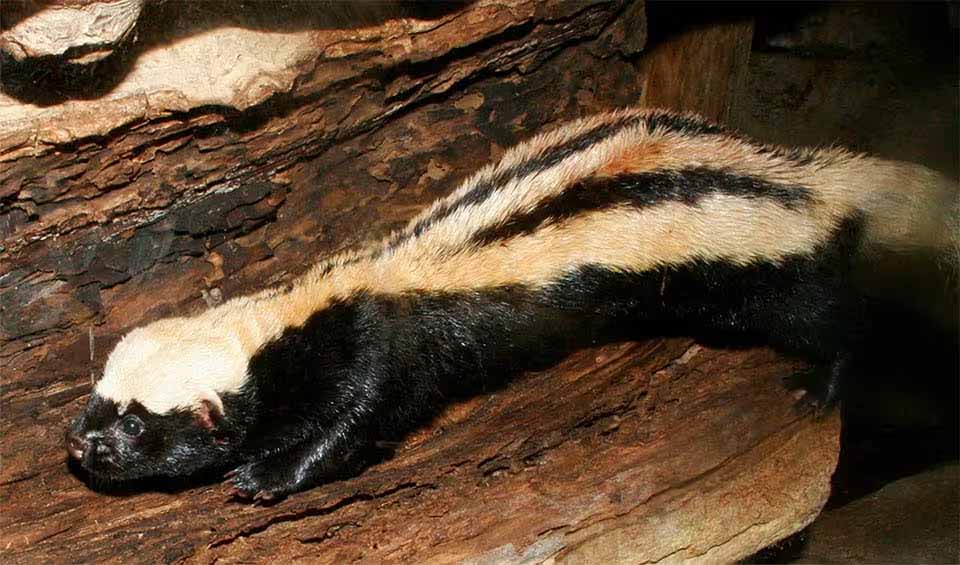Poecilogale – African striped weasel
A skunk mimic, besides a similar appearance, also releases smelly fluid from its anal gland when they feel threatened
A diminutive yet formidable predator that occupies a unique niche within the ecosystems of sub-Saharan Africa. Despite its small stature, it embodies the fierce and adaptable spirit of carnivores, showcasing remarkable hunting skills and distinctive physical characteristics that set it apart from other mammalian carnivores on the continent.
The African Striped Weasel features a strikingly long and slender body optimized for agility and stealth, with notably short legs that contribute to its low profile. This body structure is ideal for navigating through the dense underbrush of its habitat, allowing it to pursue prey and evade predators with equal adeptness.
Its coat is primarily black, adorned with a prominent white stripe that extends from the back to the top of the head, offering a stark contrast that serves as both camouflage and a warning signal to potential adversaries. The bushy, entirely white tail not only adds to its distinctive appearance but also aids in balance and communication with other weasels.
As a nocturnal hunter, the African Striped Weasel employs its keen sense of smell to track down various prey, including birds, reptiles, and small mammals. Its hunting strategy is both precise and brutal; it typically approaches its target stealthily, using scent trails, before launching a sudden and explosive attack aimed at the back of the neck. This initial strike is often followed by a series of kicks and body whips to ensure a swift kill, showcasing the weasel’s exceptional predatory skills despite its size.
The African Striped Weasel plays a critical role in maintaining the balance of its ecosystem by controlling the populations of smaller animals.
Species in this genus
African striped weasel
A skunk mimic, besides a similar appearance, also releases smelly fluid from its anal gland when they feel threatened

